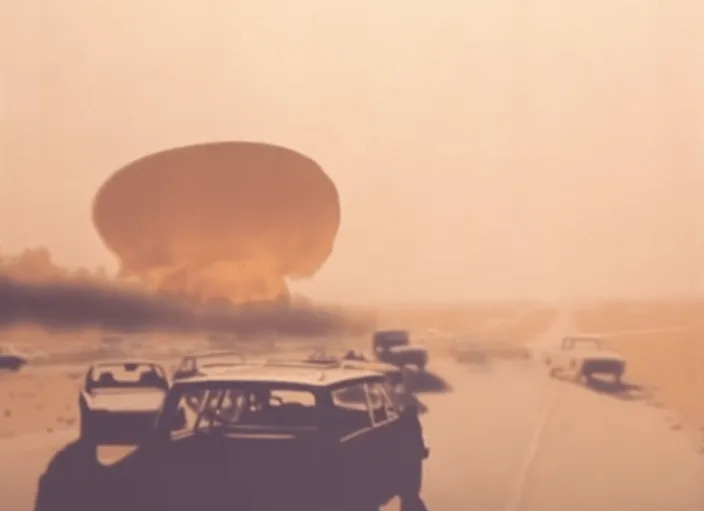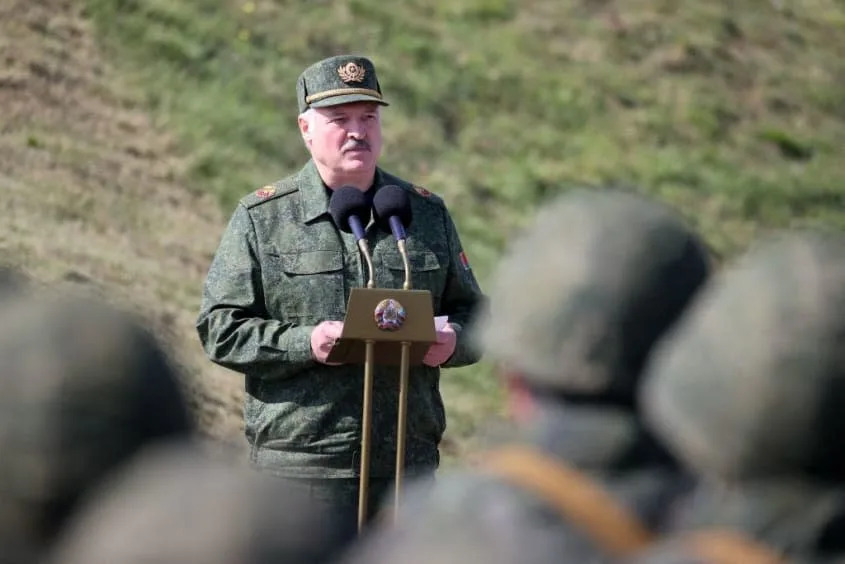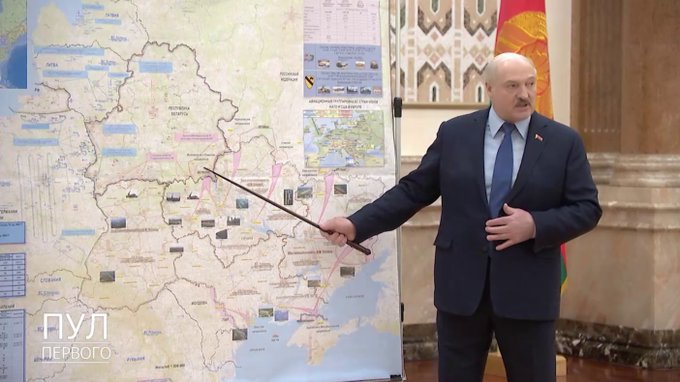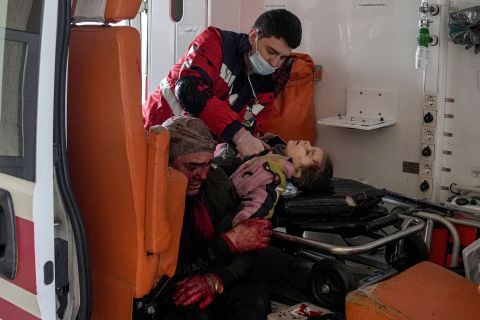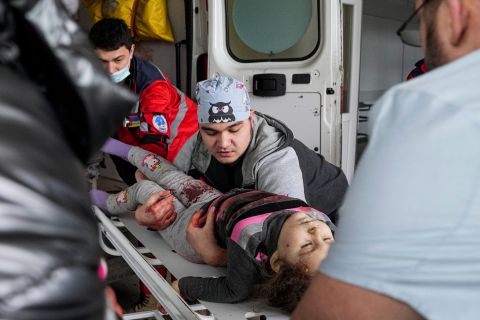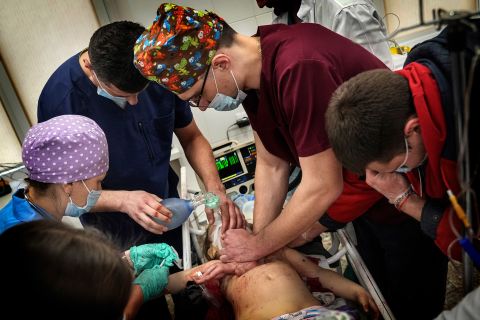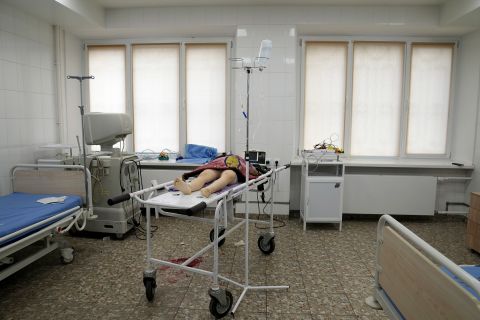Yahoo! News
Photos: Putin keeps his distance during meetings
David Knowles and Yahoo News Photo Staff – February 28, 2022
On Monday, Russian President Vladimir Putin held two meetings with advisers and Cabinet members that yielded more extraordinary images of the lengths he has gone to in recent weeks to socially distance himself from others.
With the ruble tumbling 30 percent on Monday as nations around the world unified to sanction Russia for its invasion of Ukraine, Putin met at the Kremlin with economic advisers, all of whom were gathered at one end of a long table while Putin sat alone at the other.
A second socially distant meeting on Monday included Russian Defense Minister Sergey Shoigu and Chief of the General Staff Valery Gerasimov. Again, Putin is seen at the head of the table, separated from his guests by several yards.
Putin’s invasion of Ukraine has, by most accounts, not gone according to plan. Rallied by Ukrainian President Volodymyr Zelensky, Ukraine’s military and civilian defense forces have mounted an unexpectedly robust defense of cities like Kyiv and Kharkiv, galvanizing world opinion against Putin and Russia in the process.
During a Feb. 22 meeting with Azerbaijani President Ilham Aliyev, pool photographers captured the two leaders toasting one another from across the room.
Putin’s meeting with Aliyev came one day before the Russian leader gave the order for his troops to begin their offensive in Ukraine. Russia has been one of Azerbaijan’s main suppliers of military hardware, and at the Feb. 22 meeting, Putin and Aliyev signed a declaration that Azerbaijan’s leader said “brings our relations to the level of an alliance” in that it strengthened the ties between the two nations.
But with world sentiment mounting against Putin over the Russian invasion, Aliyev seemed to have second thoughts. On Saturday, Zelensky said in a video message that Aliyev and Turkish President Recep Tayyip Erdogan had offered to help broker peace talks between Russia and Ukraine.
In an extraordinary meeting with his security council on Feb. 21, Putin again kept his distance from those he was speaking to, sitting several yards away in a columned hall in the Kremlin. Asking the security council members to offer their views on his plan to officially recognize the independence of two Ukrainian separatist regions, Putin berated Sergey Naryshkin, the head of the Russian spy service, over what he perceived as insufficient answers.
“To what degree is he now just acting all by himself? Because I actually can’t imagine for an instant that his decision to launch a full-scale invasion of Ukraine was supported by a majority of his own top officials,” Catherine Belton, a Reuters journalist and former Moscow-based correspondent for the Financial Times, told the Yahoo News “Skullduggery” podcast. “And you could see that on their faces when he held that security council meeting on Monday. You could see the fear in their eyes and that, really, they didn’t want to be there. They all looked deeply uncomfortable.”
Days before Putin declared the two separatist regions independent and announced he was sending in the Russian army to act as peacekeepers, he met at a comically large table opposite German Chancellor Olaf Scholz. In response to the Russian invasion of Ukraine, Scholz would announce harsh sanctions on Putin’s government, cancel the certification of the Nord Stream 2 pipeline and approve new arms shipments to Ukraine.
One of the members of Putin’s Cabinet to find himself targeted by NATO and U.S. sanctions was Russian Foreign Minister Sergey Lavrov, who met in the Kremlin across a very long table from Putin on Feb. 14.
When French President Emmanuel Macron arrived in Moscow on Feb. 7 for a meeting with Putin at the Kremlin, Russian officials demanded that Macron allow them to administer a COVID-19 test before he saw the Russian leader. Macron, who had been tested before arriving, refused.
French diplomatic sources told Reuters that it was believed that Putin would try to obtain Macron’s DNA through the PCR test.
“We knew very well that meant no handshake and that long table. But we could not accept that they get their hands on the president’s DNA,” one source told Reuters.
Kremlin spokesperson Dmitry Peskov said that because of that refusal, the two men were seated at opposite ends of a very long table.
“In some situations, Putin meets with his guests sitting very close by one another; they shake hands,” Peskov told reporters. “With others, negotiations are held at a table, at a distance of approximately 6 meters. This is due to the fact that some leaders follow their own rules and they do not interact with the host side in sharing tests. We treat this with understanding, this is a normal global practice, but in this case, there is a protocol of additional measures to protect the health of our president and our guests as well. A larger distance is applied.”
A close Putin ally, Hungarian Prime Minister Viktor Orbán, was also obliged to keep his distance from the Russian leader during a Feb. 1 visit to the Kremlin. Like many states that border Ukraine, Hungary is poised to see an influx of refugees fleeing the conflict.
While Orbán’s government has sought to stay neutral since Russia invaded Ukraine, its foreign minister, Péter Szijjártó, said Monday that Hungary would not allow weapons to be supplied to Ukraine through its territory.

